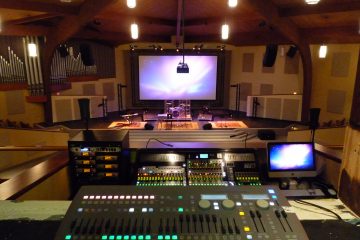7 Steps to Great Worship Audio

Producing great sound in a worship service can seem as elusive as finding a soloist who always sings on key. However, this doesn’t have to be.
Producing great sound in a worship service can seem as elusive as finding a soloist who always sings on key. However, this doesn’t have to be.
Many factors influence the quality of sound: room acoustics, sound-system design and performance, operator experience, and quality of musical performance.
Here are some practical tips on how to tie all of that together toward an optimum result.
1) Understand The Basics
To get the most out of a sound system, you must first understand how it works. Basically, acoustic energy, or the sound you make, is converted to electrical energy via a microphone, then colored or equalized via a mixer.
The mixer sends the sound through processing equipment (crossover, equalizer, signal delay), then to amplifiers to enhance the signal. Finally, the amplified signal goes to speakers, where it’s transferred back to acoustic energy.
The key components of sound—processors, amplifiers, and loudspeakers—should be professionally designed and set in a church, then left alone. The mixing board is where you should make adjustments in tone and sound levels.
2) Build A Team
A sound system won’t run by itself. It needs a trained, motivated crew to function to its true potential.
I like to recruit one-on-one, much like a hunter who goes to the woods looking for a specific target. The hunter may see ducks, squirrels, and turkeys, but he sits tight for a certain kind of deer…
Recommended Posts

Church Sound: When Our Tech World Is Turned Upside Down
13 de abril de 2021

Church Sound: Taking Care Of Business
13 de abril de 2021

Church Sound: Everything Is Amazing, And No One Is Happy
13 de abril de 2021

